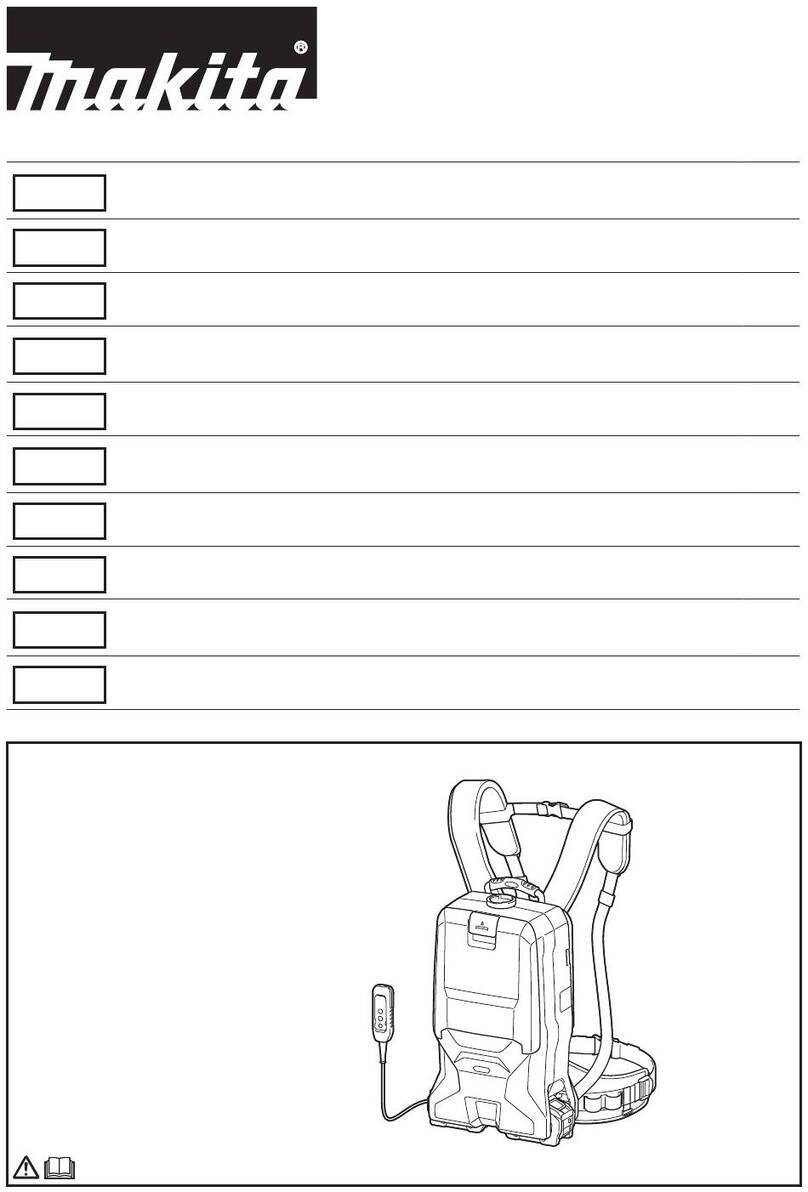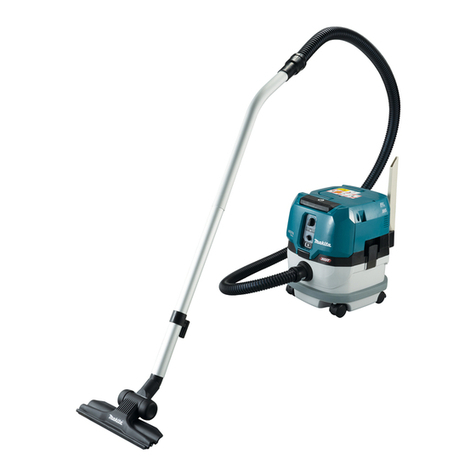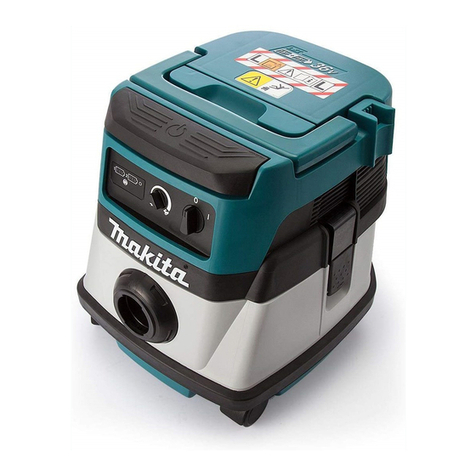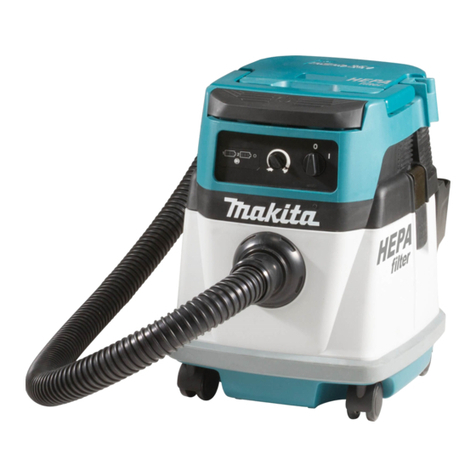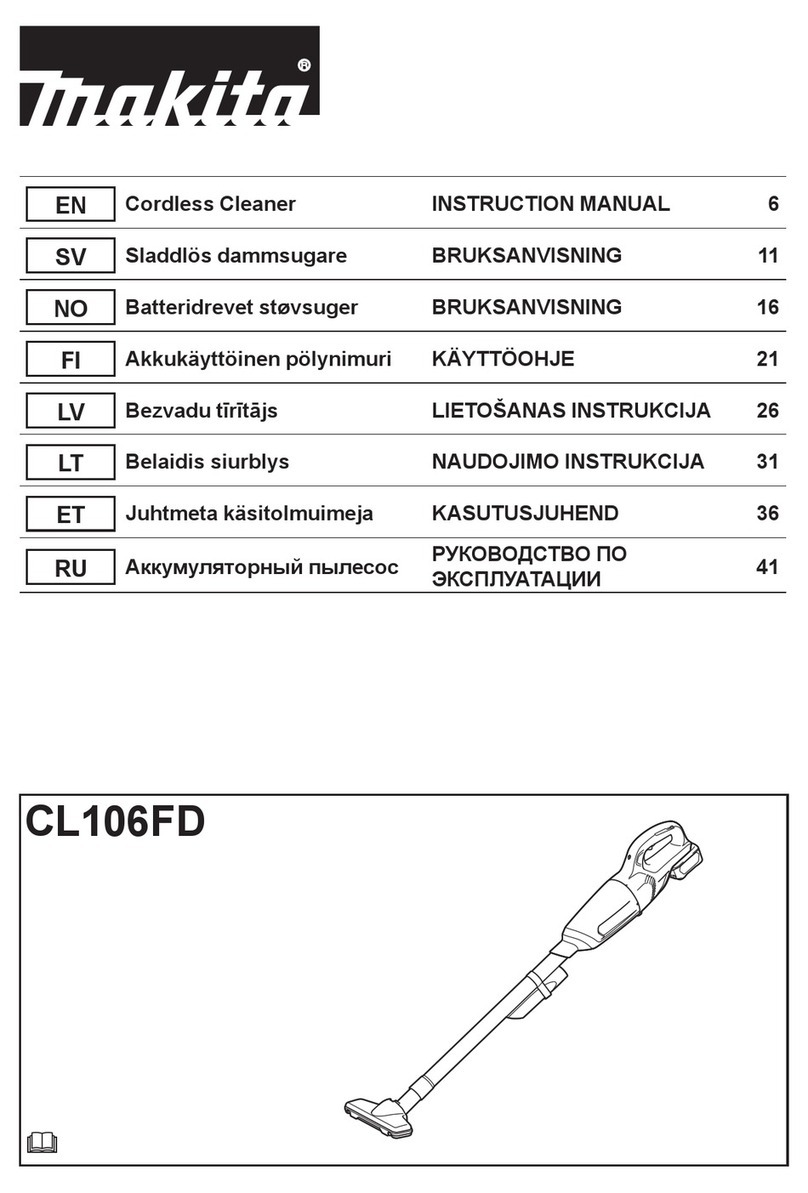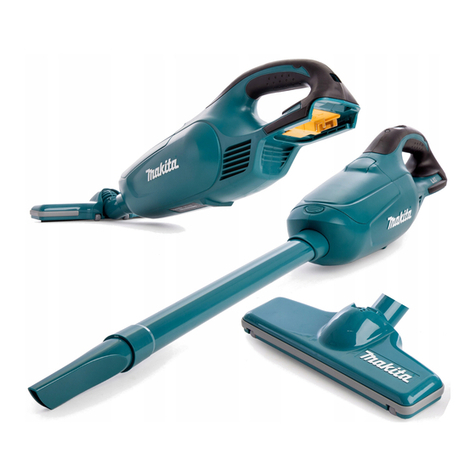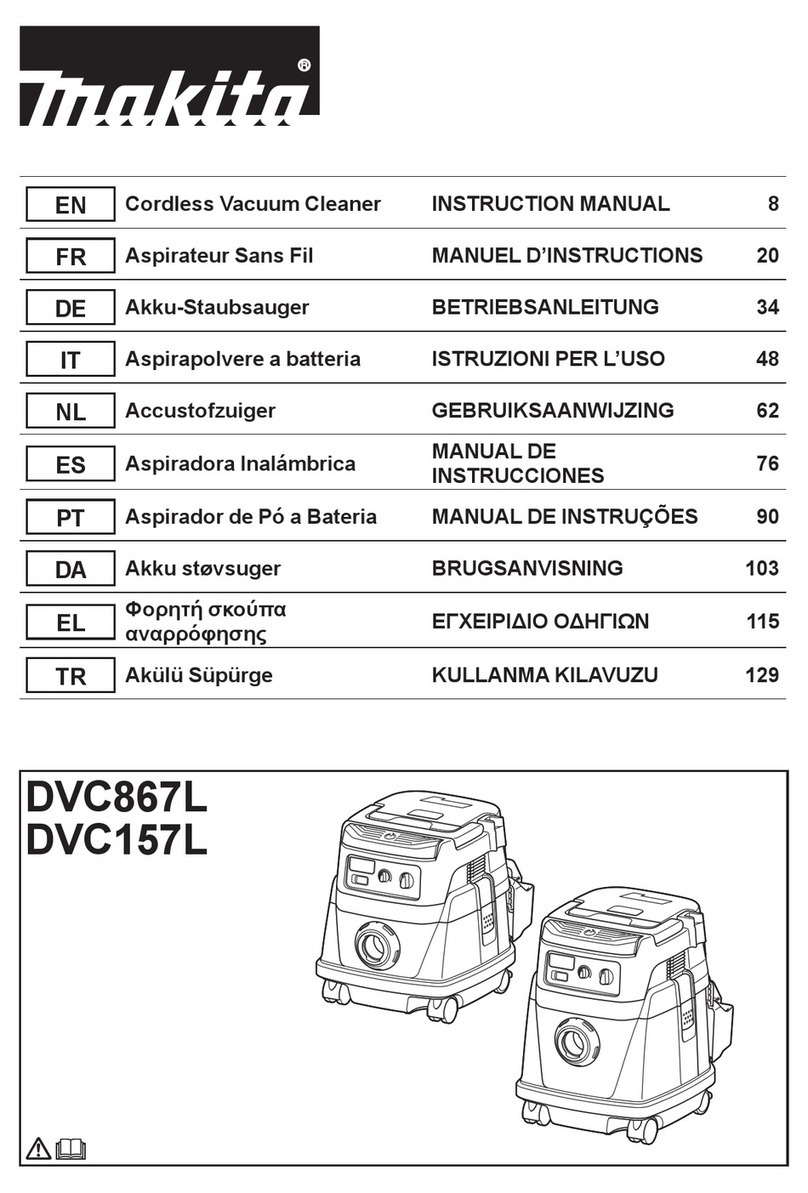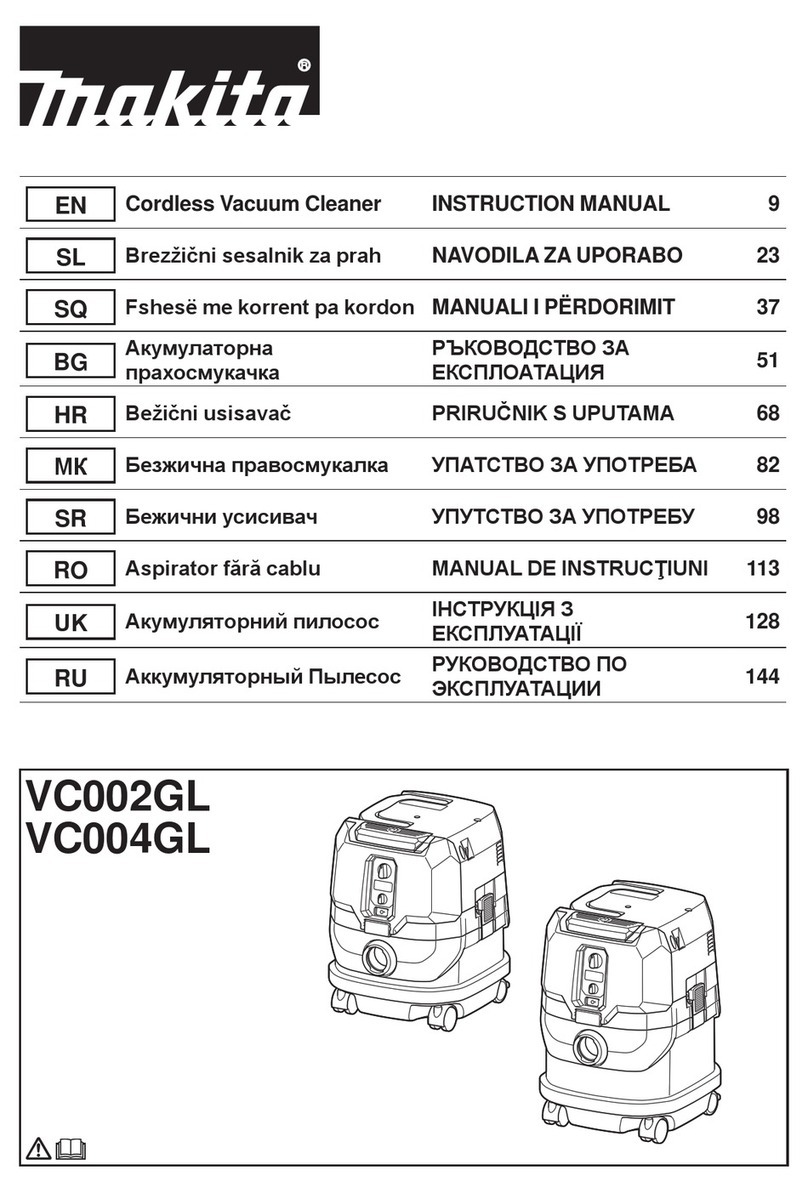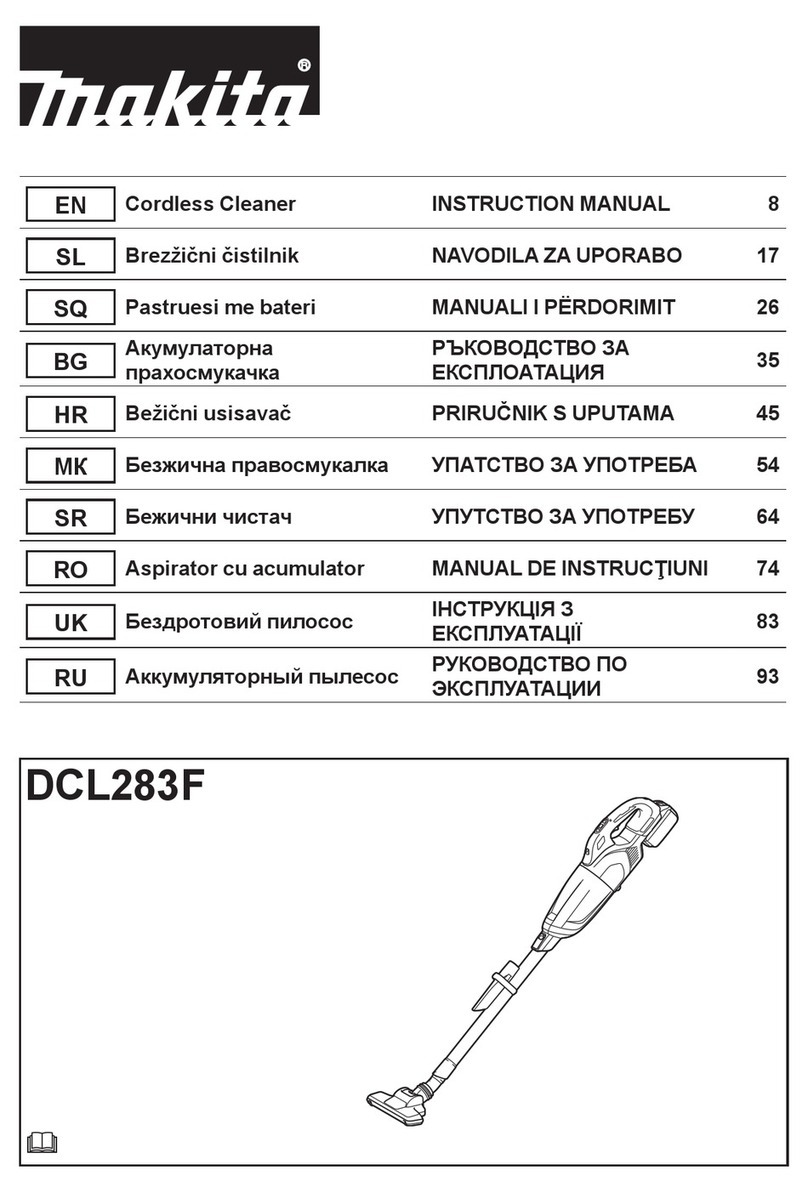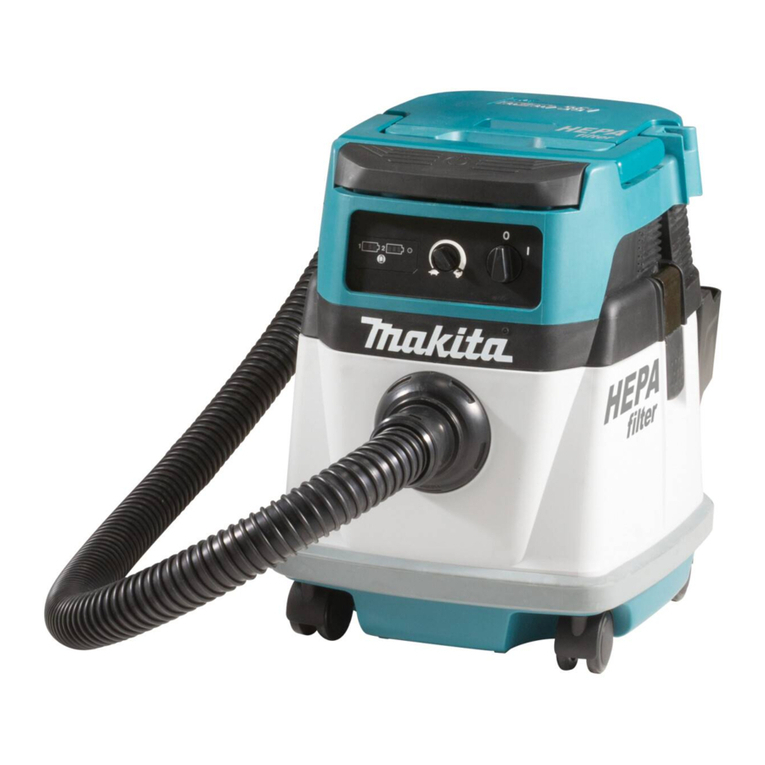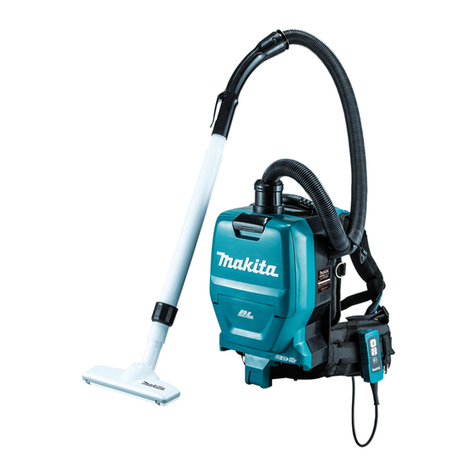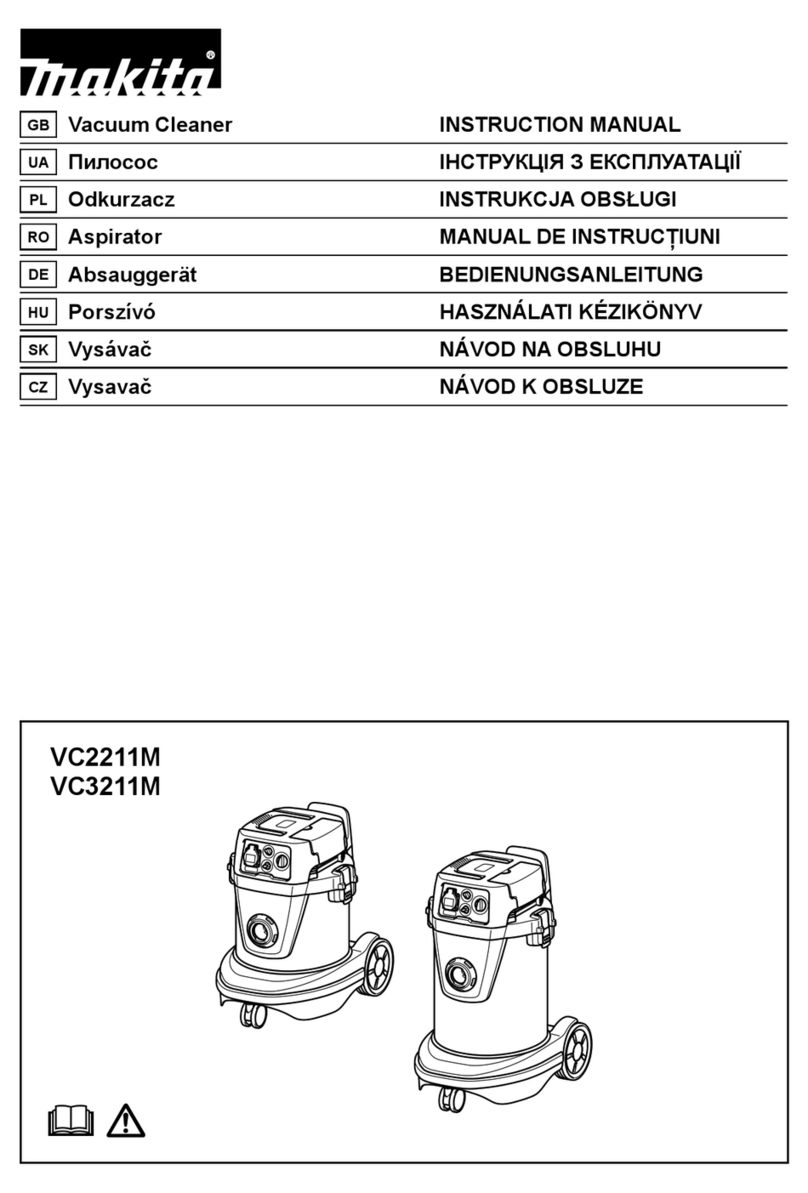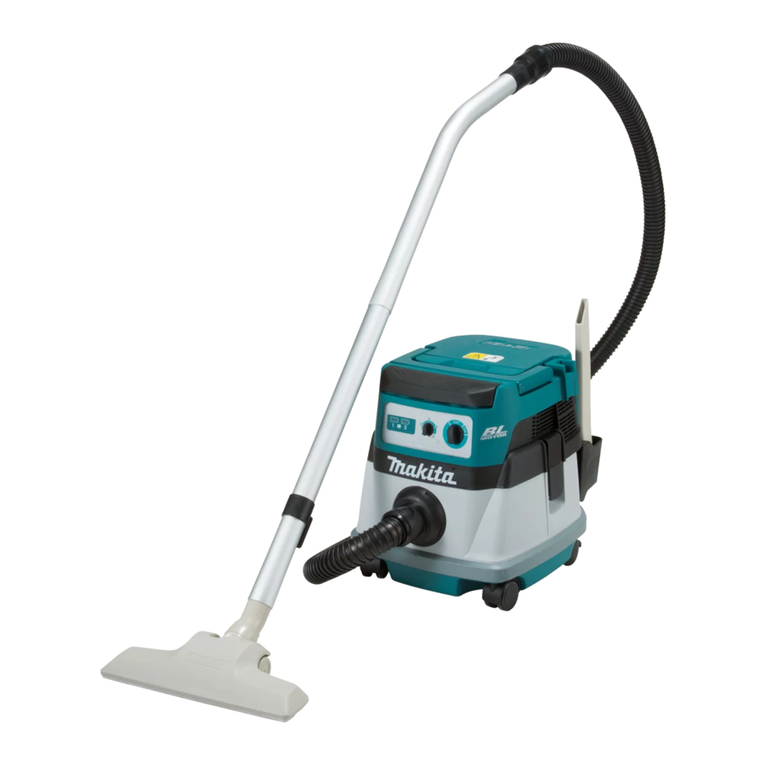
4ENGLISH
8. NEVER USE THE CLEANER IN THE VICINITY
OF GASOLINE, GAS, PAINT, ADHESIVES OR
OTHER HIGHLY EXPLOSIVE SUBSTANCES.
The switch emits sparks when turned ON
and OFF. And so does the motor commutator
during operation. A dangerous explosion may
result.
9. Never vacuum up toxic, carcinogenic, com-
bustible or other hazardous materials such
as asbestos, arsenic, barium, beryllium,
lead, pesticides, or other health endangering
materials.
10. Always place the cleaner on a horizontal at
surface to prevent it from falling or moving
unintentionally.
11. Never use the cleaner outdoors in the rain.
12. For Finland, this machine is not to be used
outdoors at low temperature.
13. Do not use close to heat sources (stoves, etc.).
14. If the exhaust air is returned to the room, it
is necessary to provide for an adequate air
change rate in the room. Reference to National
regulations is necessary.
15. Do not block suction inlet/outlet/cooling vents.
These vents permit cooling of the motor.
Blockage should be carefully avoided other-
wise the motor will burn out due to a lack of
ventilation.
16. Keep proper footing and balance at all times.
17. Do not fold, tug or step on the hose.
18. Stop the cleaner immediately if you notice
poor performance or anything abnormal
during operation.
19. REMOVE THE BATTERY(IES). When not in
use, before servicing, and when changing
accessories.
20. Clean and service the cleaner immediately
after each use to keep it in tiptop operating
condition.
21. MAINTAIN THE CLEANER WITH CARE. Keep
the cleaner clean for better and safer per-
formance. Follow instructions for changing
accessories. Keep handles dry, clean, and free
from oil and grease.
22. CHECK DAMAGED PARTS. Before further use
of the cleaner, a guard or other part that is
damaged should be carefully checked to deter-
mine that it will operate properly and perform
its intended function. Check for alignment of
moving parts, binding of moving parts, break-
age of parts, mounting, and any other condi-
tions that may aect its operation. A guard or
other part that is damaged should be properly
repaired or replaced by an authorized service
center unless otherwise indicated elsewhere
in this instruction manual. Have defective
switches replaced by authorized service cen-
ter. Don’t use the cleaner if switch does not
turn it on and o.
23. For user servicing, the machine shall be dis-
mantled, cleaned and serviced, as far as is
reasonably practicable, without causing risk to
the maintenance sta and others.
24. The machine should be technically inspected
by the manufacturer, or an instructed person,
at least annually, consisting of, for example,
inspection of lters for damage, air tightness
of the machine and proper function of the
control mechanism.
25. When carrying out service or repair opera-
tions, all contaminated items which cannot be
satisfactorily cleaned are to be disposed of;
such items shall be disposed of in impervious
bags in accordance with any current regula-
tion for the disposal of such waste.
26. REPLACEMENT PARTS. When servicing, use
only identical replacement parts.
27.
When not in use, always store the cleaner indoors.
28. Wet lters and the interior part of the liquid
container shall be dried before storage.
29. Be kind to your cleaner. Rough handling can
cause breakage of even the most sturdily built
cleaner.
30. Do not attempt to clean the exterior or interior
with benzine, thinner or cleaning chemicals.
Cracks and discoloration may be caused.
31. Do not use cleaner in an enclosed space where
ammable, explosive or toxic vapors are given
o by oil-based paint, paint-thinner, gasoline,
some mothproong substances, etc., or in
areas where ammable dust is present.
32. Do not operate the cleaner or any tool while
under the inuence of drugs or alcohol.
33. As a basic rule of safety, use safety goggles or
safety glasses with side shields.
34. Use a dust mask in dusty work conditions.
35. This machine is not intended for use by per-
sons including children with reduced physical,
sensory or mental capabilities, or lack of expe-
rience and knowledge.
36. Children should be supervised to ensure that
they do not play with the cleaner.
37.
Never handle battery(ies) and cleaner with wet hands.
38. Use extreme caution when cleaning on stairs.
39. Do not use the cleaner as a stool or work
bench. The machine may fall down and may
result in personal injury.
Battery tool use and care
1. Recharge only with the charger specied by
the manufacturer. A charger that is suitable for
onetypeofbatterypackmaycreateariskofre
when used with another battery pack.
2. Use power tools only with specically desig-
nated battery packs. Use of any other battery
packsmaycreateariskofinjuryandre.
3. When battery pack is not in use, keep it away
from other metal objects, like paper clips,
coins, keys, nails, screws or other small metal
objects, that can make a connection from one
terminal to another. Shorting the battery termi-
nalstogethermaycauseburnsorare.
4. Under abusive conditions, liquid may be
ejected from the battery; avoid contact. If con-
tact accidentally occurs, ush with water. If
liquid contacts eyes, additionally seek medical
help.Liquidejectedfromthebatterymaycause
irritation or burns.


